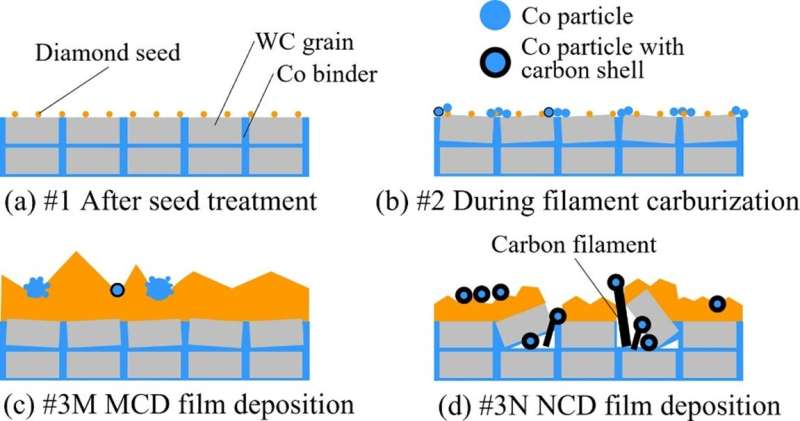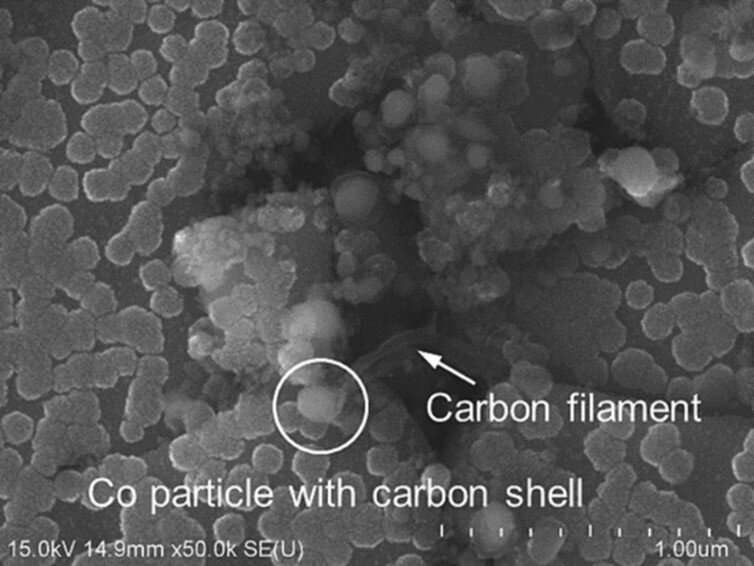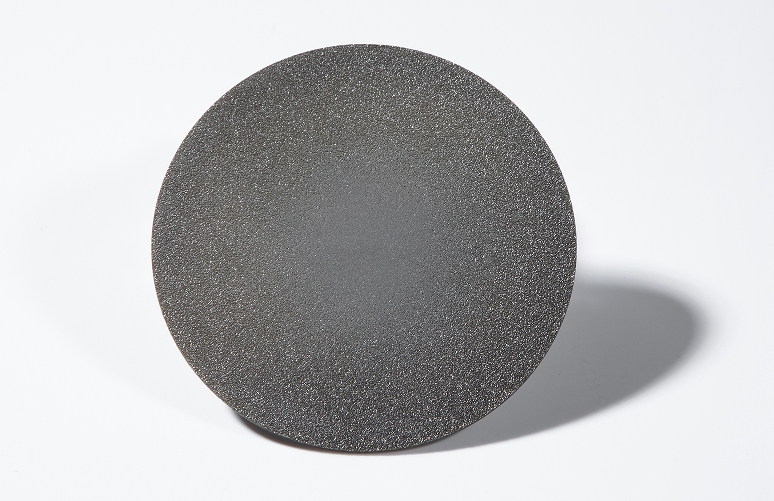Company tel:+86-379-63184520
Contact number:+86-15937921751
Postcode:471000
Email:info@yuxindiamond.com
Address:3-1-508 Luoyang National University Science Park, No. 2 Penglai Road, Jianxi District, Luoyang, China 471000
Understanding the mechanism of non-uniform formation of diamond film on tools
by Toyohashi University of Technology

Tools coated with diamond film (diamond-coated tools) are used for difficult-to-machine materials such as CFRP. In the manufacture of diamond-coated tools, a pretreatment is required to remove cobalt from the tool using a liquid in order to achieve a uniform diamond film surface. However, there are concerns about the environmental impact of liquid waste from liquid pretreatment (wet processing), and there is a need to develop a process that does not use liquids (dry processing).
A research team consisting of master's student Yoshinori Saiki, Assistant Professor Takahiro Bando, Lecturer Toru Harigai, Professor Hirofumi Takikawa from the Department of Electrical and Electronic Information Engineering at Toyohashi University of Technology, and others has revealed the mechanism by which cobalt makes the diamond film surface non-uniform with the aim of developing a pretreatment that does not require wet processing.
In particular, the team found that carbon filaments cause non-uniform formation in smooth, low-friction nanocrystalline diamond films, and that inhibition of carbon filaments is key. This study was conducted in collaboration with OSG Corporation (a leading company in the Higashimikawa region) and Nagaoka University of Technology, making it a unique research project for Toyohashi University of Technology.
Tools coated with diamond film (diamond-coated tools) are used for difficult-to-machine materials. A typical example of difficult-to-machine materials is carbon fiber-reinforced plastic (CFRP), which is used as a light and hard material to reduce the weight of aircraft and automobile bodies.
As a base material of tools for depositing diamond films, cemented tungsten carbide with cobalt binder is usually used. And hot filament chemical vapor deposition (HF-CVD) is used as the film deposition technique. When diamond film is deposited on cemented tungsten carbide by HF-CVD, it is known that the quality of diamond-coated tools deteriorates as the diamond film becomes non-uniform due to cobalt grains. Therefore, a pretreatment is required to remove the cobalt on the cemented tungsten carbide with liquid.
However, there are concerns about the environmental impact of liquid waste from liquid treatment (wet processing), and there is a need to develop a process that does not use liquids (dry processing). In this study, we initially revealed the mechanism by which cobalt makes the diamond film surface non-uniform with the aim of developing a pretreatment that does not require wet processing.
There are two types of diamond films deposited on tools: microcrystalline diamonds and nanocrystalline diamonds. Previous research has proposed a mechanism for non-uniform formation only for microcrystalline diamonds. However, there were no findings about nanocrystalline diamonds, which are considered to be smooth, have little friction, and be more suitable for tools.
In this study, we revealed the non-uniform formation mechanism for nanocrystalline diamonds as well as microcrystalline diamonds with time-resolved observation of the deposition process for microcrystalline diamonds and nanocrystalline diamonds. In particular, in nanocrystalline diamonds, the carbon filaments lift particles on the tungsten carbide substrate, making the substrate non-uniform, thereby causing non-uniform formation.

Carbon filaments grown from cemented tungsten carbide. Credit: Toyohashi University of Technology
In this study, we showed that it is important to inhibit carbon filament growth in the initial stage of deposition in order to inhibit the non-uniform formation of nanocrystalline diamond films in dry processing. In the future, we plan to develop a deposition technique using HF-CVD in a high-temperature environment that can inhibit the growth of carbon filaments. Furthermore, after establishing a uniform formation process for nanocrystalline diamond films, we plan to apply the process to actual tools and investigate their machining performance.
The findings are published in the journal Diamond and Related Materials.
In addition, the CVD polycrystalline diamond produced and supplied by Luoyang Yuxin Diamond is also very suitable for processing non-metallic composite materials such as carbon fiber.

Source: https://phys.org/







